Linkert DC Carb Overhaul
Article by Mark Trotta
The Linkert Model DC is a side-float, tube-type carburetor, found primarily on 1950s and 1960s Harley-Davidson Big-Twins, Sportsters, and Servi-cars. It's a simple design with a venturi, discharge nozzle, adjustable high and low speed nozzles, and a fixed jet. The only two moving parts are the float assembly and the throttle shaft.
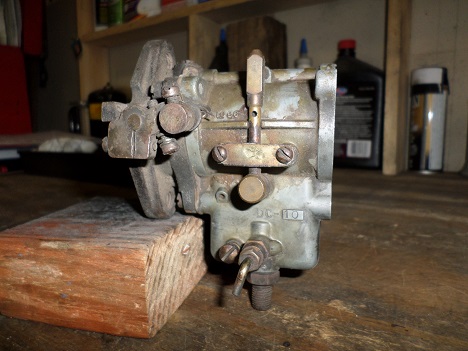
Early Harley Sportsters (1957-1965) came from the factory with a Linkert DC carb. It was replaced by a Tillotson carb in 1966.
Linkert DC Carburetor Models
- DC1 - 1957-1958 Sportster XL Early Style
- DC1L - 1959-1960 Sportster XL
- DC1M - 1959-1960 Sportster XL
- DC2 - 1959-65 Servi-car (smaller venturi, opposite float bowl)
- DC6 - 1961 Sportster XLH and XLCH
- DC7 - 1966 Big-Twin FL and FLH (larger venturi)
- DC10 - 1962 through mid-63 Sportster XLH and XLCH
- DC12 - 1966 Big-Twin FL and FLH mid-1963 1964 1965 Sportster XLH and XLCH
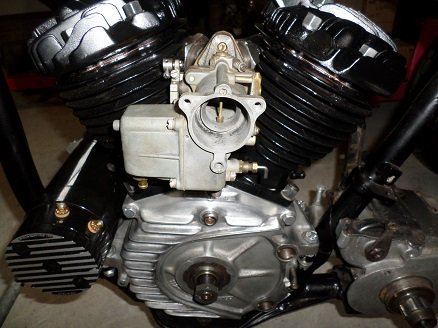
A "left-handed" Linkert DC was fitted to 1959-1965 Harley Servi-cars. The reason for this is Harley Flathead engines have the carburetor on the left side.
With the exception of the Harley Shovelhead carb and the DC-2 on the Servi-car, all Linkert DC versions have the same carb body. Their venturi size is the same. They are not removable, they are a one-piece casting. The difference was changing the jet size, and modifying the inlet valve. Any change denotes a different model stamping.
*********************
Linkert DC Carb Overhaul
An overhaul kit and some carburetor cleaner is all you need for a rebuild. No special tools are required.
V-Twin Mfg offers a complete overhaul kit for Linkert carbs. Fits 1933 through 1965 Harley models.
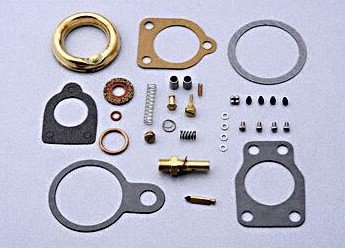
The kit includes needle, seat, float, bushings, springs, float pin and gaskets. It is also available without the brass float.
After disconnecting the fuel line, carb removal is straightforward. It's held onto the intake manifold with two bolts.
Clean and inspect all parts. Blow out fuel circuits and air passages with compressed air.
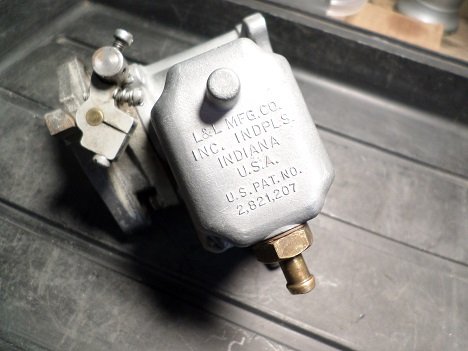
Check throttle shaft for play. If play is excessive, the throttle shaft bushings can be knocked out and pressed in, then reamed with a 0.250" drill.
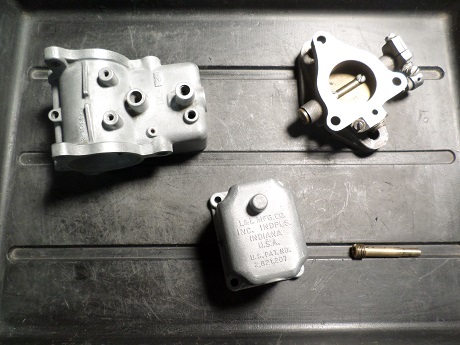
The throttle body is held on with three bolts and lock washers. After removing the bolts and lock washers from the float bowl, remove it by tapping it gently. Inside the bowl you will see the idle tube and bowl nut.
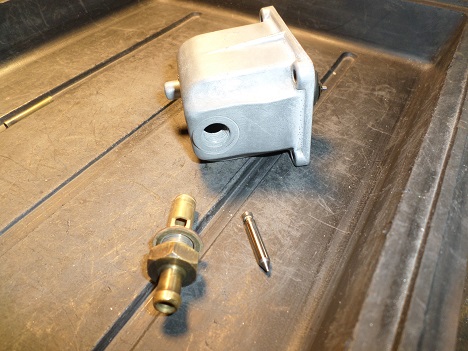
The float seat/main nozzle for the DC2 carb is different than other DC models.
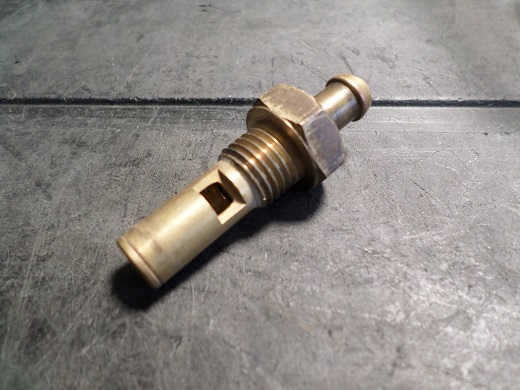
Cleaning
After spraying with carb cleaner down into the fuel wells enough to make it puddle, let it sit overnight.
If it's really dirty, consider investing in a gallon can of Berryman's Chem-Dip and soak the body and float bowl (but not the float). This will dissolve the old dried-up remnants of fuel and removes sludge.
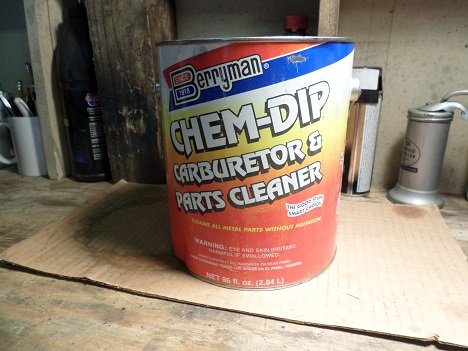
Be careful with this stuff - not only will it remove gunk, it will eat plastics, puff up gaskets, and remove paint.
After soaking, a little brushing from a nylon brush will help clean things up.
To get a good cleaning without soaking the carb in Chem-Dip, spray down into the fuel wells with carb cleaning spray enough to make it puddle, then let it sit overnight.
After soaking it, you'll still need to run something through the small passages. A set of carburetor cleaning brushes are great for getting out the stubborn junk.
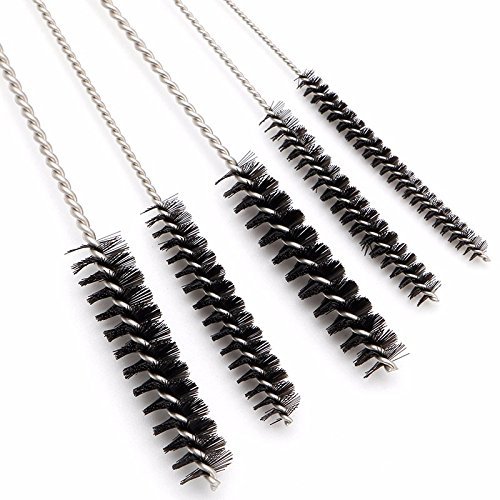
You'll be surprised at how much stuff comes out of the ports. When done cleaning, rinse the carburetor and parts with water and blow dry.
*********************
Re-Assembly
The first stage in the assembly process is to install the throttle shaft and butterfly.
Next, assemble the vent housing assembly, gasket, idle bleed tube, and the two-screw clamp to the main body. Screw the main nozzle back into the carb body, making sure the needle valve doesn't get jammed up in the seat hole.
Re-install metering plug.
Main Jet Size
A #4 main jet is most common in DC Linkert models. According to the Harley shop manual, the DC-6, 10, and 12 ran a #4 jet, and the DC-1 ran a #9 jet.
The DC-7 ran a #45 jet, which is the largest size.
Set The Float
This is done with the float bowl removed from the body.
Invert the bowl and measure the distance from the top of the float rod to the outer edge of the bowl flange (the one opposite the fuel inlet fitting). The distance should be one inch (give or take 1/64").
Use a new gasket on the float bowl. A homemade gasket is not advisable since the thickness of the gasket is part of the float measurement.
Float bowl gaskets are the same on all 1957 through 1966 Linkert DC carbs.
Install the throttle body on the main body with the three bolts and lock washers. Check for any throttle shaft interference.
Re-install Carb On Bike
Early Sportster XL and XLH models usually had a single insulating spacer between the carburetor and the intake manifold.
The Shovelhead Linkert required two spacers, and an XLCH Sportster may have three. Their function was to keep some of the engine heat from transferring to the carbs.
NOTE: Check to make sure the two mounting bolts are the correct length for the spacer/spacers. If they are too long, damage to the throttle body may result when tightened.
The DC Linkert carb has an external choke plate in the stock air cleaner.
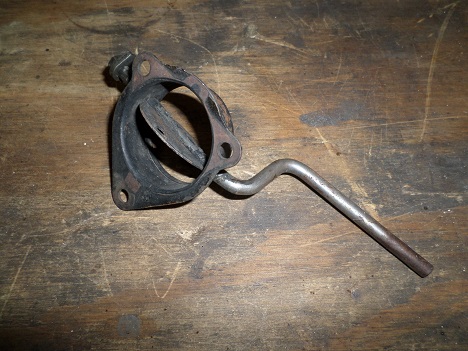
Without the air cleaner, you have no choke.
As I was not using stock handlebars on my 1961 Servi-Car, I had to fabricate a throttle cable mounting. The cable needed to be six-inches longer than stock (44 inches), and was routed from the bottom of the carb up into the throttle lever.
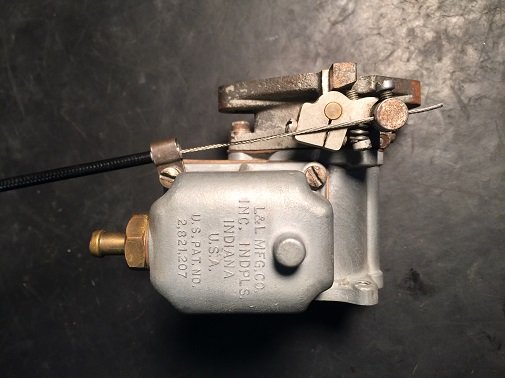
Lastly, use a quality gas filter, such as this mini glass bowl fuel filter from Milwaukee Twins.
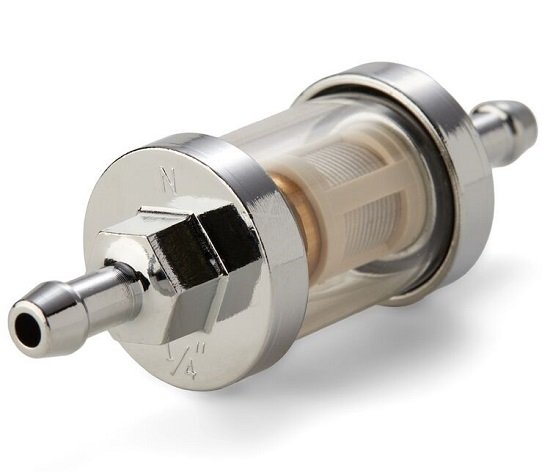
*********************
Bomb Sight Carburetor
The venturi of some Linkert carbs resemble the aiming device used by airplane bombardiers in World War Two, hence the nickname "bombsight".
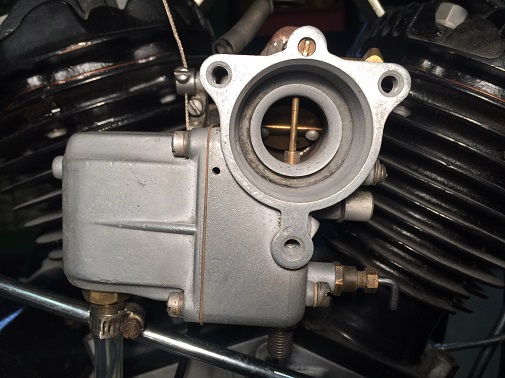
Some will argue that bomb-sight venturi's deliver higher intake velocity and better fuel/air mixture.
Performance Modifications
The Linkert DC carb is not a first choice for added performance, but for the competition-minded, there are bowl extensions that can be added to enlarge fuel capacity. It's an extra section that bolts in between the float bowl and the carb body. Some have dual gas ports which give a better fuel flow.
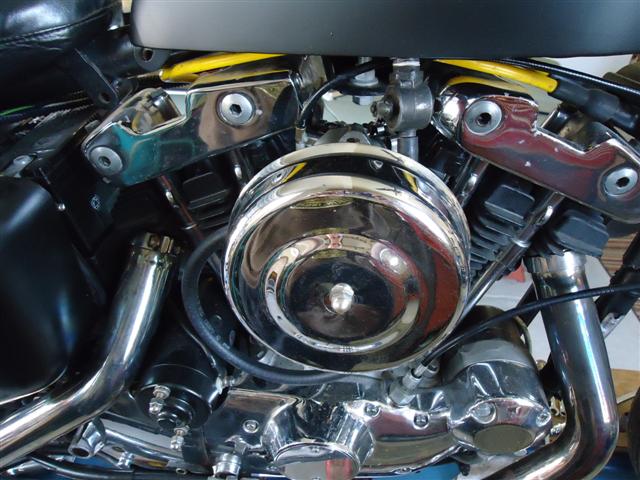
*********************
Related Articles: